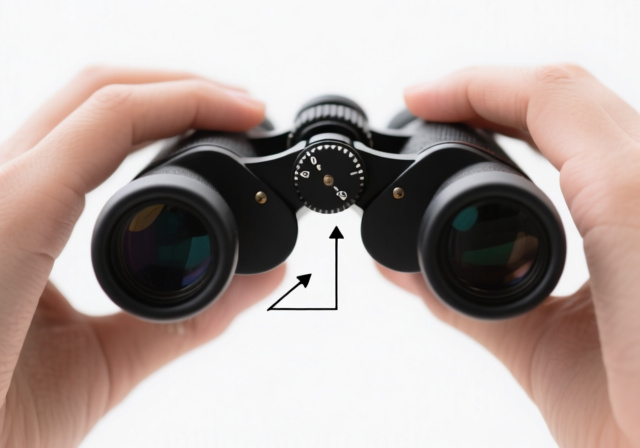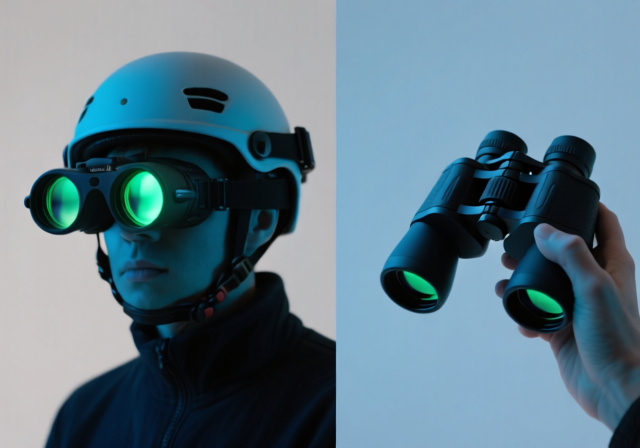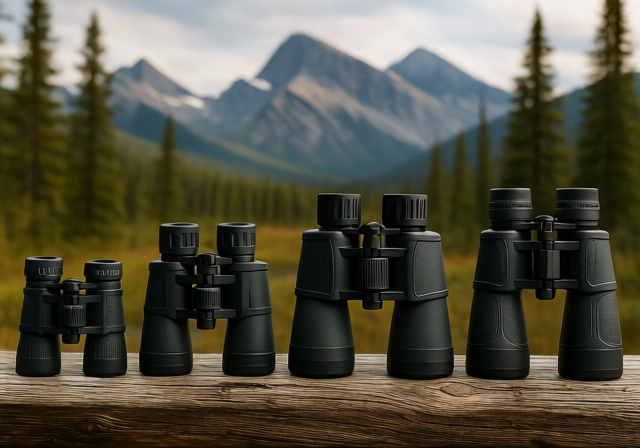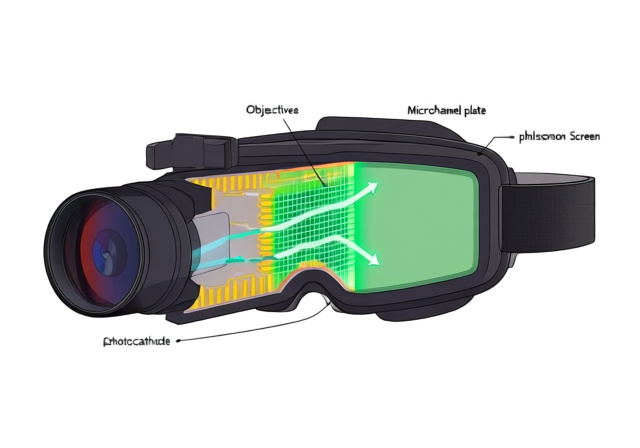

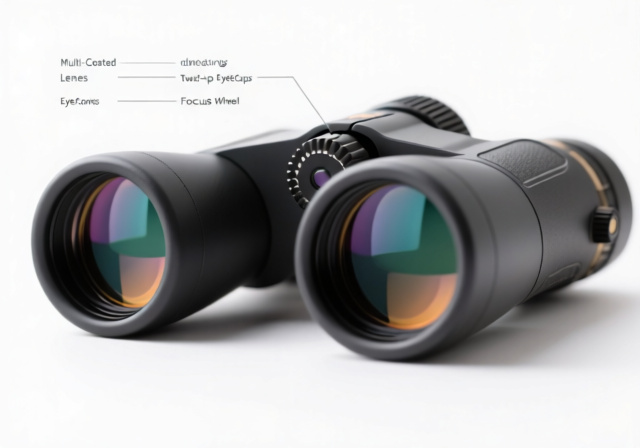

Walking into an outdoor store and staring at a wall of binoculars can feel overwhelming. All those numbers, technical terms, and features make choosing the right pair seem like you need an optics degree just to make a decision.
Binocular features are the technical specifications and capabilities that determine how binoculars perform, including magnification power, lens size, optical quality, and durability characteristics. Understanding these features is the key to selecting binoculars that will actually enhance your outdoor experiences rather than frustrate you.
After testing over 50 different models across various price points, I’ve learned that the most expensive binoculars aren’t always the best choice. The right pair depends entirely on how you plan to use them and which features matter most for your specific activities.
This guide breaks down every binocular feature in plain English, with practical examples and real-world insights from both experts and everyday users. Whether you’re bird watching, hunting, stargazing, or attending concerts, you’ll learn exactly which features will make a difference for your needs.
The numbers on binoculars tell you the most important specifications at a glance. Understanding this numbering system is the first step in making an informed choice.
Binocular numbers follow a simple format: “magnification x objective lens diameter.” For example, 8×42 binoculars have 8x magnification and 42mm objective lenses. The magnification tells you how much closer objects appear, while the objective lens diameter determines how much light the binoculars gather.
Higher magnification isn’t always better. While 12x binoculars bring objects 50% closer than 8x models, they also magnify every shake and tremor in your hands. After testing dozens of models, I’ve found that most users are happier with 8x or 10x magnification unless they plan to use a tripod.
The objective lens diameter affects both brightness and size. Larger lenses (50mm+) gather more light for better performance in dim conditions, but make the binoculars heavier and bulkier. This is why 8×42 binoculars have become the popular all-around choice – they balance decent light gathering with manageable weight.
Exit Pupil: The exit pupil is calculated by dividing the objective lens diameter by magnification (42÷8=5.25mm for 8x42s). A larger exit pupil (7mm) is better for low light, while 3-4mm works fine for daytime use.
Field of view (FOV) tells you how wide an area you can see at 1000 yards. Expressed in feet, a wider FOV (300-400ft) makes it easier to find and track moving subjects like birds. Higher magnification naturally reduces FOV, which is another reason why experienced users often recommend 8x over 10x for activities like bird watching.
| Binocular Size | Best For | Exit Pupil | Typical Weight | Field of View |
|---|---|---|---|---|
| 8×32 | Daytime use, hiking, travel | 4mm | 16-22 oz | 330-420 ft |
| 8×42 | All-around use, birding | 5.25mm | 22-28 oz | 330-380 ft |
| 10×42 | Distance viewing, hunting | 4.2mm | 24-30 oz | 260-340 ft |
| 7×50 | Marine use, stargazing | 7.1mm | 28-36 oz | 350-400 ft |
The optical quality of binoculars depends on several key features working together. Understanding these components helps you recognize why some binoculars cost more and what you’re paying for in premium models.
Binoculars use prisms to flip the image right-side up and correct the orientation. The two main types are roof prisms and Porro prisms, each with distinct advantages.
Roof prism binoculars have straight barrels, making them more compact and durable. The complex prism design allows for this streamlined shape but requires precise manufacturing. Quality roof prisms need special phase correction coatings to maintain image sharpness and contrast.
Porro prism binoculars have an offset, zigzag shape. They’re generally less expensive to manufacture and often provide better depth perception and wider field of view at similar price points. However, their bulkier design makes them less convenient for packing and carrying.
From my testing, high-end roof prisms (like those from Swarovski or Zeiss) match Porro prism quality while offering better ergonomics. But in the budget to mid-range categories ($100-500), Porro prisms often deliver better optical performance for the money.
Lens coatings are one of the most important yet misunderstood features. They reduce light reflection, increase light transmission, and improve image contrast. The quality and type of coatings significantly affects brightness and clarity.
Coated optics have a single layer on at least one lens surface. Fully coated means all air-to-glass surfaces have at least one layer. Multi-coated applies multiple layers to at least one surface, while fully multi-coated (the best standard) means multiple layers on all air-to-glass surfaces.
Premium binoculars might use proprietary coatings like Swarovski’s SWAROBRIGHT or Nikon’s Eco-Glass. These can achieve 90%+ light transmission compared to 70-80% in basic coated models. The difference is noticeable in dim light or when viewing details in shadows.
Glass quality matters just as much as coatings. Most binoculars use BK-7 glass, while premium models feature BaK-4 or specialized extra-low dispersion (ED) glass. ED glass reduces chromatic aberration – those annoying color fringes you see on high-contrast edges. After comparing dozens of models, I can confirm that ED glass makes a real difference, especially for bird watchers who need to see subtle feather details.
Most binoculars use a center focus wheel with a diopter adjustment on one eyepiece. The diopter compensates for vision differences between your eyes. Once set, you only use the center wheel for focusing.
Some binoculars, particularly waterproof models, have individual focus for each eyepiece. These are less convenient for general use but excel for marine or astronomy applications where subjects are at fixed distances.
The focus speed varies between models. Fast focus systems complete the range from close focus to infinity in just 1-2 turns of the wheel. This matters for bird watchers who need to track rapidly moving subjects. I prefer a slightly slower focus system (2-3 turns) as it allows more precise adjustment, especially when viewing distant subjects.
Close focus tells you the minimum distance at which binoculars can focus. This feature matters more than most people realize. For butterfly or insect watching, you might need 6-8 feet close focus. General bird watching works well with 10-15 feet. Many compact binoculars excel here, with some models focusing as close as 5 feet.
In my experience testing binoculars in various environments, I’ve found that good close focus capability (under 10 feet) makes the binoculars more versatile. You can enjoy watching birds at your feeder, insects in your garden, or details at a museum without switching equipment.
Modern binoculars include advanced features that enhance performance in specific situations. These technologies often justify higher prices for users who need these capabilities.
Image stabilization (IS) counters hand tremor to provide a steady view at higher magnifications. Canon pioneered this technology, borrowing from their camera lens expertise. IS binoculars use either gyroscopic sensors or vari-angle prisms to counter movement.
The benefit is most noticeable at 10x magnification and above. With IS, you can effectively use 12x or even 15x binoculars handheld – something nearly impossible without stabilization. However, IS adds weight, cost, and battery requirements.
From my testing, image-stabilized binoculars shine for boat use and anyone who views from unstable platforms. They’re also excellent for people with hand tremors or those who frequently switch between viewing and taking notes.
The trade-off is weight (most IS models weigh 30-40oz) and cost (typically $500-1500+). Battery life is generally good – you can expect 20-30 hours of continuous use from lithium batteries.
Weather protection involves waterproofing and fog proofing. Waterproof binoculars use O-ring seals to prevent moisture ingress. Most are rated to withstand immersion in 1-3 meters of water for 5-30 minutes.
Fog proofing means the binoculars are filled with dry nitrogen or argon gas. This prevents internal fogging when moving between temperature extremes. Argon provides better protection than nitrogen and maintains its protective properties longer.
✅ Pro Tip: Always check the IPX or JIS waterproof rating. IPX-7 means waterproof to 1 meter for 30 minutes. JIS 6 provides rain protection, while JIS 7 offers full waterproofing.
Rubber armor provides both protection and grip. Look for textured patterns that feel secure in wet conditions. Some premium models add protective features like flip-down lens covers that stay attached and objective lens caps that can be operated with one hand.
High-end binoculars now include technologies like laser rangefinders, GPS, and even ballistic calculators. These features appeal primarily to hunters and long-range shooters who need precise distance measurements.
Rangefinding binoculars use Class 1 eye-safe lasers and can measure distances from 5-1500+ yards depending on the model and target size. Accuracy is typically within 1 yard up to 500 yards.
Smart binoculars might include digital compasses, altitude displays, and Bluetooth connectivity to sync with smartphone apps. While these features sound impressive, consider whether you’ll actually use them. Many users find they prefer simpler binoculars that focus on optical quality rather than electronics.
The best binoculars are useless if they’re uncomfortable to use. Comfort features become crucial during extended viewing sessions or when carrying binoculars all day.
Eye relief is the distance your eyes can be from the eyepieces while still seeing the full field of view. This feature is critical for glasses wearers. You need at least 15mm of eye relief if you wear glasses, with 17-20mm being ideal.
Modern binoculars feature twist-up eyecups that lock at various positions. This allows both glasses wearers and non-wearers to find their optimal eye position. Some models use rubber fold-down eyecups, but these wear out over time and offer less precise adjustment.
For glasses wearers, I always recommend testing binoculars with your glasses on. Many users are surprised to find that expensive binoculars don’t work well with their eyewear due to insufficient eye relief.
Weight matters more than specifications suggest. A 28oz pair of binoculars might feel manageable in the store but becomes noticeable after hours of use. For all-day carrying, look for binoculars under 25oz.
Balance affects perceived weight. Well-balanced binoculars feel lighter than their actual weight. The balance point should be slightly forward of the focus wheel, allowing the binoculars to rest naturally in your hands.
Neck strap design significantly impacts comfort. Wide, padded straps distribute weight better than thin cord straps. Some users prefer harness systems that transfer weight to the shoulders rather than the neck.
Good ergonomics make binoculars feel like an extension of your hands. Look for contoured shapes that fit your grip naturally. The focus wheel should be positioned where your index finger naturally rests, large enough to operate with gloves but not so large it’s accidentally bumped.
Rubber armor provides grip, but the texture matters. Smooth rubber becomes slippery when wet, while aggressive texturing can irritate skin during extended use. The best designs combine strategic texturing in key grip areas with smooth surfaces elsewhere.
Different activities prioritize different features. This table summarizes which features matter most for common uses:
| Activity | Ideal Size | Key Features | Why It Matters |
|---|---|---|---|
| Bird Watching | 8×42 or 10×42 | Wide FOV, close focus, good eye relief | Track fast birds, view nearby subjects |
| Hunting | 10×42 or 12×50 | Good low light, durable, waterproof | Spot game at dawn/dusk, withstand weather |
| Stargazing | 7×50 or 10×50 | Large exit pupil, Porro prism | Bright images, better depth perception |
| Marine Use | 7×50 | Waterproof, compass, image stabilization | Handle motion, withstand water exposure |
| Sports/Concerts | 8×32 or 10×32 | Compact, wide FOV, portable | Easy to carry, good for indoor venues |
| Hiking/Travel | 8×32 or 10×32 | Lightweight, durable, waterproof | Save weight, handle weather conditions |
Bird watchers need a balance of features to handle various situations. Wide field of view helps locate birds quickly, while good close focus allows viewing nearby subjects without scaring them away. Eye relief of 17mm+ works well for glasses wearers who frequently raise and lower their binoculars.
From my experience leading bird walks, 8×42 binoculars remain the sweet spot. They provide enough magnification to identify details while maintaining enough stability to track birds in flight. The 42mm objective lenses gather enough light for early morning and late afternoon viewing when birds are most active.
Hunters prioritize different features based on their specific type of hunting. Tree stand hunters often prefer 8×42 for their wider field of view when scanning for movement. Western hunters in open country might choose 10×42 or even 12×50 for spotting game at distance.
Low-light performance is crucial for dawn and dusk hunting. This means larger objectives (50mm) and quality glass. Waterproof construction is non-negotiable – nothing’s worse than fogged optics during a hunt. Many hunters also prefer camo finishes, though I’ve found that matte black actually breaks up your outline better than most patterns.
For astronomy, bigger is better within reason. 7×50 binoculars are classic night sky tools, offering a 7mm exit pupil that matches the dark-adapted human eye. Porro prisms provide better depth perception for navigating star fields.
A tripod adapter becomes essential above 10x magnification. Some astronomy enthusiasts even use image-stabilized binoculars to avoid setup time. The key is finding a balance between light gathering and portability – you’re more likely to use smaller binoculars more often.
Beyond specifications, several indicators reveal true binocular quality. Learning to recognize these signs helps you make better decisions when shopping.
Build quality becomes apparent in the details. Smooth focus operation without backlash or slop indicates precise manufacturing. The diopter adjustment should stay set once positioned. Twist-up eyecups should lock firmly at each position without collapsing under pressure.
Optical testing doesn’t require special equipment. Test binoculars in challenging conditions – view high-contrast scenes to check for chromatic aberration, look at fine details to assess sharpness, and try them in dim light to evaluate brightness. Quality optics maintain edge-to-edge sharpness better than budget models.
Price-to-performance ratios vary dramatically. The jump from $100 to $300 binoculars often provides the biggest improvement in optical quality. Going from $300 to $600 offers incremental gains, while $1000+ binoculars deliver diminishing returns for most users. As one forum member noted, “Glass quality matters more than specific features – you can have all the features but poor glass quality ruins the experience.”
Learning from others’ mistakes can save you money and frustration. These are the most common pitfalls I’ve encountered:
10×42 binoculars are more versatile and easier to hold steady than 12×50 models. While 12x50s offer more magnification and light gathering, the increased shake makes them difficult to use without support. For most users, 10×42 provides the best balance of power and stability.
Binocular vision provides depth perception, better low-light performance, and natural viewing comfort compared to monoculars. Using both eyes reduces eye strain and provides a more immersive experience, especially important for extended viewing sessions.
8×42 binoculars are generally better for beginner bird watchers due to their wider field of view and easier stabilization. Experienced birders often prefer 10×42 for identifying distant birds. Consider your hand stability and whether you primarily view birds in forests (favoring 8x) or open areas (where 10x excels).
8x binoculars offer easier handling and wider field of view, making them better for general use and beginners. 10x provides more detail for stationary subjects but requires steadier hands. Choose 8x for activities involving movement or if you have hand tremors, 10x for stationary viewing from stable positions.
8x magnification is ideal for all-around use, providing good detail without excessive shake. 10x works well for stationary viewing with practice. 7x excels for marine and astronomy use. Avoid magnifications above 10x without tripod support – most users overestimate their ability to hold high magnification steady.
Premium binoculars ($1000+) offer better glass quality, coatings, and build precision, resulting in brighter, sharper images with less eye strain. However, most users find excellent performance in the $300-600 range. The key is matching features to your needs rather than simply buying the most expensive option.
Choosing the right binoculars comes down to understanding which features matter for your specific needs. Don’t get caught up in marketing hype or feel pressured to buy the most expensive model. The best binoculars are the ones you’ll actually use and enjoy.
Start by determining your primary use case. Bird watchers should prioritize wide field of view and close focus. Hunters need good low-light performance and durability. Stargazers benefit from large exit pupils and quality optics. Once you know your priorities, the other features fall into place.
Remember that optical quality trumps feature quantity. A simple, well-made 8×42 will provide more enjoyment than a feature-packed model with mediocre optics. As many experienced users note, you’ll appreciate good glass quality long after you’ve forgotten about extra features.
Before buying, try to test multiple models side by side. Visit a store with a good selection or borrow from friends. Notice how different models feel in your hands, how the focus operates, and how comfortable they are with your glasses if you wear them. This hands-on experience often reveals preferences you didn’t know you had.
Finally, consider your budget realistically. While premium binoculars offer excellent performance, the $300-500 range provides exceptional value for most users. Invest in quality where it matters most – optics and waterproofing – and save money on features you might not need.
The right pair of binoculars will enhance your outdoor experiences for years to come. Take your time, choose based on your actual needs, and don’t be afraid to prioritize quality over quantity of features. Your future self will thank you every time you raise them to your eyes.


